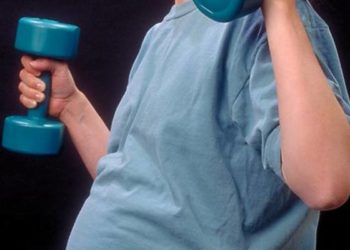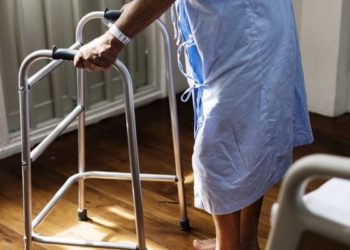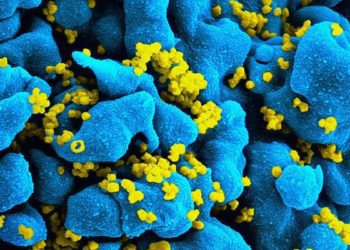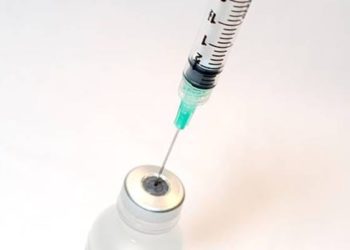Regular physical activity associated with lower all-cause and cause-specific mortality compared with physical inactivity
1. This prospective cohort study found that individuals who consistently engage in regular physical activity or weekend warrior, experience lower all-cause and cause-specific mortality rates compared to inactive individuals.
2. No significant differences in all-cause or cause-specific mortality were found between weekend warriors and regularly active participants which suggests that individuals who engage in recommended levels of physical activity either throughout the week or concentrated into fewer days, may experience the same benefit.
Evidence Rating Level: 2 (Good)
Study Rundown: Physical activity is associated with a lower risk of non-communicable diseases and the WHO recommends that adults engage in regular physical activity, both moderate and intense on a weekly basis. It is unclear however, whether the weekly recommended amount of moderate to vigorous physical activity (MVPA) has the same lowering effect on mortality risk when activity sessions are concentrated into fewer days or spread out throughout the week. This prospective cohort study investigated the association of weekend warrior, and other active patterns with all-cause and cause-specific mortality. Main outcomes included all-cause, cardiovascular disease (CVD) and cancer mortality. A total of 350 970 participants who self-reported physical activity to the US National Health Interview Survey from 1997 to 2013 were followed during a median of 10.4 years. In terms of exposures, participants were grouped according to self-reported activity levels, physically active (≥150min/week of moderate or ≥75min/week of vigorous activity) or physically inactive (<150min/week of MVPA). The weekend warrior activity pattern was classified as 1-2 sessions/week, while regularly active participants were classified as engaging in ≥3 sessions/week. Physically active participants that engaged in longer, intense sessions of leisure-time physical activity had lower all-cause and cause-specific mortality rates compared with inactive participants. In particular, longer session duration was associated with a lower all-cause mortality. When engaging in the same amount of total MVPA, no significant difference in all-cause mortality or cause-specific mortality rates was found between weekend warriors and regularly active participants. A strength of this study is its large sample size. A limitation to this study however, is that the questionnaire used to measure the exposures of interest is a method prone to measurement error.
Click to read the study in JAMA Internal Medicine
Relevant Reading: The “Weekend Warrior” and Risk of Mortality
In-Depth [prospective cohort]: This study examined the association between patterns of leisure-time physical activity, including the weekend warrior, with all-cause and cause-specific mortality. A total of 350 978 adult participants were followed for a median of 10.4 years (mean [SD] age, 41.4 [15.2] years; 192 432 [50.8%] women; 209 432 [67.8%] Non-Hispanic White). Participants were classified by their level and pattern of physical activity: physically active (MVPA ≥150 min/week) and inactive (MVPA <150 min/week). The physically active group was further classified according to frequency of MVPA sessions: weekend warrior (≤ 2 sessions/week) or regularly active (≥3 sessions/week). A total of 21 898 deaths were documented, 4130 from CVD and 6034 from cancer. Hazard ratios (HRs) for CVD mortality were 0.87 (95% CI, 0.66-1.15) for weekend warrior and 0.77 (95% CI, 0.71-0.84) for regularly active participants. For cancer mortality, the HRs were 0.94 (95% CI, 0.77-1.15) for weekend warrior and 0.88 (95% CI, 0.83-0.94) for regularly active participants. Compared with physically inactive participants, multivariable adjusted HRs for all-cause mortality were 0.92 (95% CI, 0.83-1.02) for weekend warrior, and 0.85 (95% CI, 0.83-0.88) for regularly active participants. After adjusting for total MVPA, the weekend warrior participants demonstrated similar all-cause and cause-specific mortality rates compared with regularly active participants, with HRs of 1.08 (95% CI, 0.97-1.20) for all-cause mortality, 1.14 (95% CI, 0.85-1.53) for CVD mortality, and 1.07 (95% CI, 0.87-1.31) for cancer mortality.
Image: PD
©2022 2 Minute Medicine, Inc. All rights reserved. No works may be reproduced without expressed written consent from 2 Minute Medicine, Inc. Inquire about licensing here. No article should be construed as medical advice and is not intended as such by the authors or by 2 Minute Medicine, Inc.







![The ABCD2 score: Risk of stroke after Transient Ischemic Attack (TIA) [Classics Series]](https://www.2minutemedicine.com/wp-content/uploads/2013/05/web-cover-classics-with-logo-medicine-BW-small-jpg-75x75.jpg)